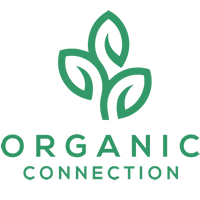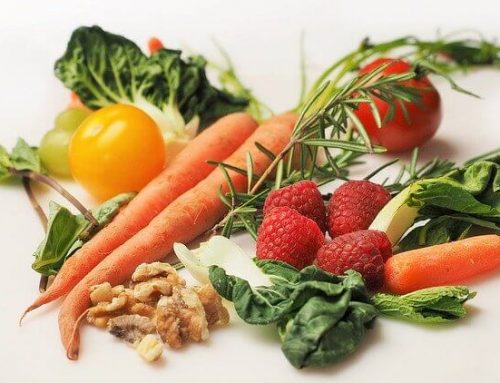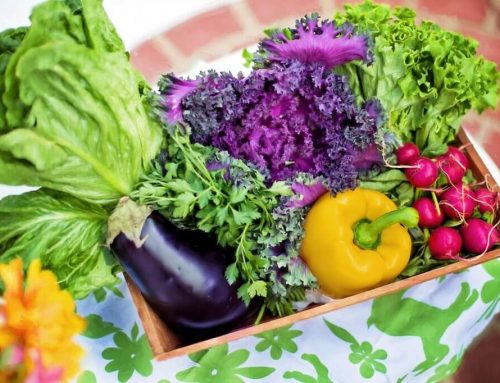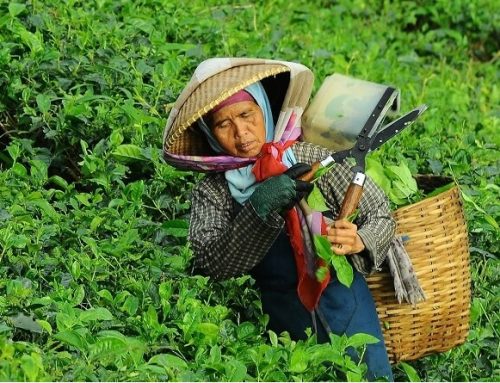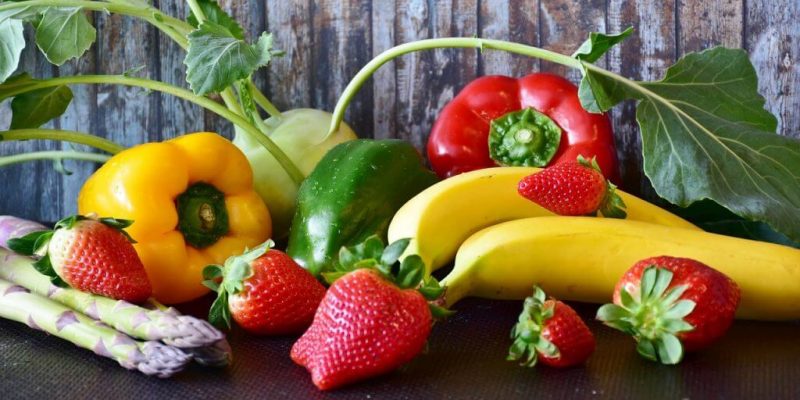
Several high-profile advocates of conventional agricultural production have stated that the world would starve if we all converted to organic agriculture. They have written articles for science journals and other publications saying that organic agriculture is not sustainable and produces yields that are significantly lower than conventional agriculture.
Thus, the push for genetically modified organisms, growth hormones, animal-feed antibiotics, food irradiation and toxic synthetic chemicals is being justified, in part, by the rationale that without these products the world will not be able to feed itself.
The only famines that have occurred since 1968 have been in African countries saddled with corrupt governments, political turmoil, civil wars and periodic droughts. The world had enough organic food for these people — it was political and logistical events that prevented them from producing adequate food or stopped aid from reaching them. Hundreds of millions of people did not starve to death.
The specter of mass starvation is being pushed again as the motive for justifying GMOs. In June 2003, President Bush stated at a biotechnology conference, “We should encourage the spread of safe, effective biotechnology to win the fight against global hunger.”
In this first decade of the 21st century, many farmers around the world are facing a great economic crisis of low commodity prices. These low prices are due to oversupply. Current economic theories hold that prices decrease when supply is greater than demand.
The reality is that the world produces more than enough food to feed everyone and has more than enough suitable agricultural land to do it. Unfortunately, due to inefficient, unfair distribution systems and poor farming methods, millions of people do not receive adequate nutrition.
Can organic agriculture feed the world?
An editorial in New Scientist for February 3, 2001, stated that low-tech, sustainable agriculture is increasing crop yields on poor farms across the world, often by 70 percent or more. This has been achieved by replacing synthetic chemicals with natural pest control and natural fertilizers.
Professor Jules Pretty, director of the Centre for Environment and Society at the University of Essex, wrote, “Recent evidence from 20 countries has found more than 2 million families farming sustainably on more than 4-5 million hectares. This is no longer marginal. It cannot be ignored. What is remarkable is not so much the numbers, but that most of this has happened in the past 5-10 years. Moreover, many of the improvements are occurring in remote and resource-poor areas that had been assumed to be incapable of producing food surpluses.”
An excellent example of this type of agricultural extension has been published in the January 2003 World Vision News. Working in conjunction AusAID, World Vision linked farmers from the impoverished Makuyu community in Kenya with the Kenya Institute of Organic Farming (KIOF).
They arranged workshops where KIOF members taught the principles of organic farming, including compost making, preparing safe organic pesticides, organic vegetable gardening and organic care of livestock.
Maize yields increased by four to nine times. The organically grown crops produced yields that were 60 percent higher than crops grown with expensive chemical fertilizers.
The wonderful thing is that many of these farmers now have a surplus of food to sell, whereas previously they did not even have enough to eat. They are organizing marketing co-ops to sell this surplus.
The profits are going back to the community. They have distributed dairy goats, rabbits, hives and poultry to community members and have planted 20,000 trees, including 2,000 mangos. Several of the organic farmers are training many other farmers in the district and helping them to apply organic farming techniques to their farms.
The mood of the community has changed. They are now confident and empowered with the knowledge that they can overcome the problems in their community.
These types of simple, community-based organic agricultural models are what is needed around the world to end rural poverty and starvation, not GMOs and expensive toxic chemicals.
The Makuyu community in Kenya is not an isolated example. Professor Pretty gives other examples from around the world of increases in yield when farmers have replaced synthetic chemicals and shifted to sustainable/organic methods:
• 223,000 farmers in southern Brazil using green manures and cover crops of legumes and livestock integration have doubled yields of maize and wheat to 4-5 tons/hectare.
• 45,000 farmers in Guatemala and Honduras used regenerative technologies to triple maize yields to 2-2.5 tons/ha and diversify their upland farms, which has led to local economic growth that has in turn encouraged remigration back from the cities.
• 200,000 farmers across Kenya as part of sustainable agriculture programs have more than doubled their maize yields to about 2.5 to 3.3 tons/ha and substantially improved vegetable production through the dry seasons.
• 100,000 small coffee farmers in Mexico have adopted fully organic production methods and increased yields by half.
• A million wetland rice farmers in Bangladesh, China, India, Indonesia, Malaysia, Philippines, Sri Lanka, Thailand and Vietnam have shifted to sustainable agriculture, where group-based farmer field schools have enabled farmers to learn alternatives to pesticides and increase their yields by about 10 percent.
One of the most important aspects of the teaching farmers in these regions to increase yields with sustainable/organic methods is that the food and fiber is produced close to where it is needed and in many cases by the people who need it. It is not produced halfway around the world, transported, and then sold to them.
Another important aspect is the low input costs. Growers do not need to buy expensive imported fertilizers, herbicides and pesticides. The increase in yields also comes with lower production costs, allowing a greater profit to these farmers.
Third, the substitution of more labor-intensive activities such as cultural weeding, composting and intercropping for expensive imported chemical inputs provides more employment for local and regional communities. This employment allows landless laborers to pay for their food and other needs.
Can organic agriculture achieve high yields in developed nations?
Since 1946, the advent of chemical fertilizers, pesticides, herbicides, improved crop varieties and industrial paradigms are credited with producing the high yields of the “green revolution.” Because organic agriculture avoids many of these new inputs, it is assumed that it always results in lower yields.
The assumption that greater inputs of synthetic chemical fertilizers and pesticides are required to increase food yields is not accurate. In a study published in The Living Land, Professor Pretty looked at projects in seven industrialized countries of Europe and North America. He reported, “Farmers are finding that they can cut their inputs of costly pesticides and fertilizers substantially, varying from 20 to 80 percent, and be financially better off. Yields do fall to begin with (by 10 to 15 percent, typically), but there is compelling evidence that they soon rise and go on increasing. In the USA, for example, the top quarter of sustainable agriculture farmers now have higher yields than conventional farmers, as well as a much lower negative impact on the environment.”
Professor George Monbiot, in an article in the Guardian (August 24, 2000), wrote that wheat grown with manure has produced consistently higher yields for the past 150 years than wheat grown with chemical nutrients, in U.K. trials.
A study of apple production conducted by Washington State University compared the economic and environmental sustainability of conventional, organic and integrated growing systems in apple production. The organic system had equivalent yields to the other systems. The study also showed that the break-even point was nine years after planting for the organic system and 15 and 16 years, respectively, for conventional and integrated farming systems.
In an article published in the peer-review scientific journal Nature, Laurie Drinkwater and colleagues from the Rodale Institute showed that organic farming had better environmental outcomes as well as similar yields of both products and profits when compared to conventional, intensive agriculture.
Steve Bartolo, president of the Australian Organic Sugar Producers Association, produced similar yields of commercial sugar per hectare from his organic Q124 cane and his conventional cane in 2002. The average yield of sugar for his best organic cane “achieved higher tonnes per hectare compared to the average of all conventionally grown Q124.” Greg Paynter, an organic farmer who works for the Queensland Department of Primary Industries, conducted the organic section of grain comparison trials at Dalby Agricultural College in 2002. The organic wheat produced 3.23 tonnes to the hectare compared to the conventional wheat yield of 2.22 tonnes. This trial was conducted during one of the worst droughts on record.
Dr Rick Welsh of the Henry A. Wallace Institute reviewed numerous academic publications comparing organic and conventional production systems in the United States. The data showed that the organic systems were more profitable. This profit was not always due to premiums, but was instead a result of lower production and input costs as well as more consistent yields. Dr. Welsh’s study also showed that organic agriculture produces better yields than conventional agriculture in adverse weather events, such as droughts or higher-than-average rainfall.
Conclusion: Organic agriculture can feed the world
The data thus shows that it is possible to obtain very good yields using organic systems. This is not uniform at the moment, with many organic growers not yet producing at the levels that are achievable. Education on the best practices in organic agriculture is a cost-effective and simple method of ensuring high levels of economically, environmentally and socially sustainable production where it is needed.
Organic agriculture is a viable solution to preventing global hunger because:
• It can achieve high yields.
• It can achieve these yields in the areas where it is needed most.
• It has low inputs.
• It is cost-effective and affordable.
• It provides more employment so that the impoverished can purchase their own needs.
• It does not require any expensive technical investment.
It costs tens of millions of dollars and takes many years to develop one genetically modified plant variety. This money would be spent far more productively on organic agricultural education, research and extension in the areas where we need to overcome hunger and poverty.
Organic agriculture is the quickest, most efficient, most cost-effective and fairest way to feed the world.
Andre Leu is the president of the Organic Producers Association of Queensland (Australia), and vice chair of the Organic Federation of Australia.
by Andre Leu, January 2004, Acres U.S.A. www.acresusa.com
